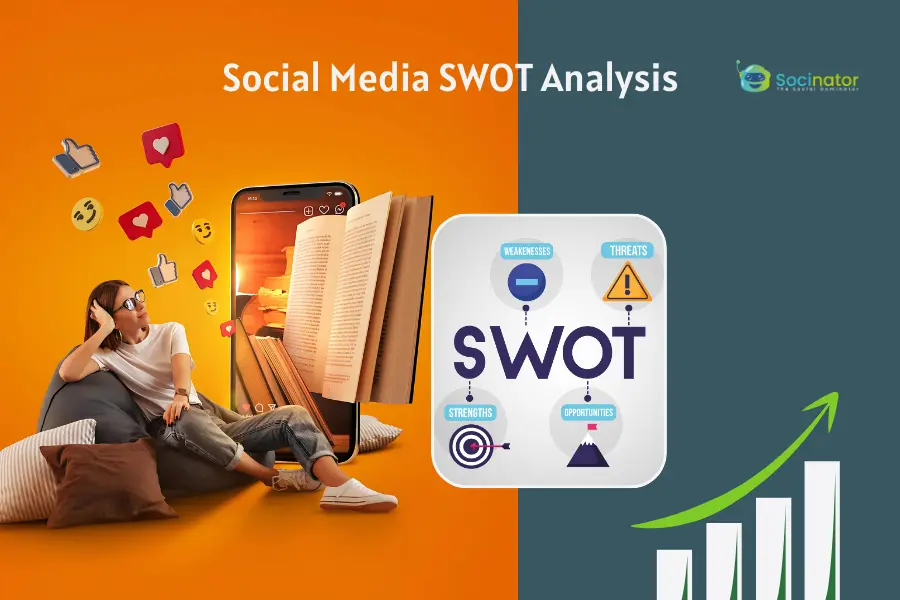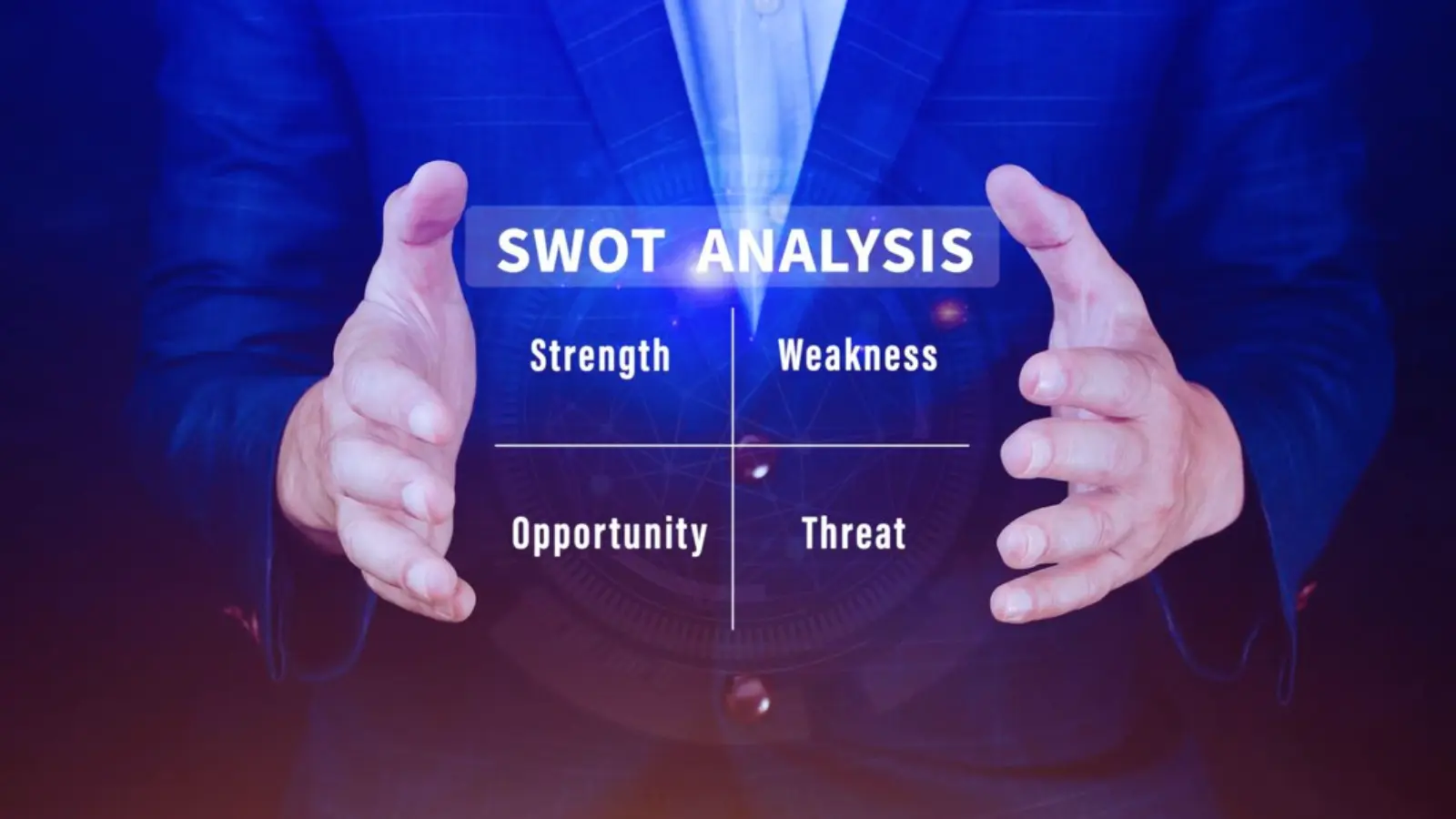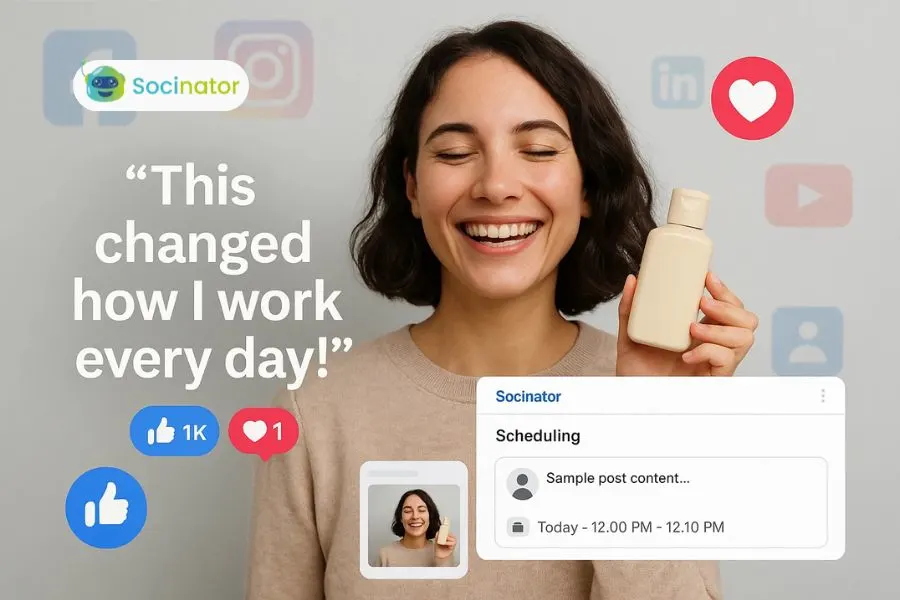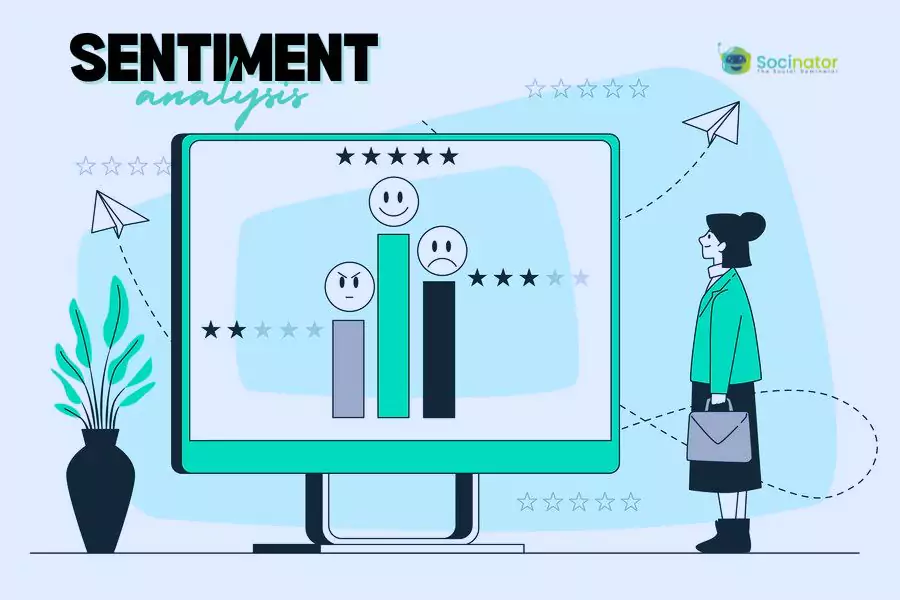With over 5 billion social media user identities- accounting for 62.3% of the global population- social media has become an essential platform for businesses to connect with their audiences. But are you fully maximizing its potential? What if you could break down your strategy, uncover areas for improvement, and identify your strengths and weaknesses? This is where a social media SWOT analysis comes in—a straightforward yet powerful tool that provides valuable insights and helps you gain a clearer perspective on your social media efforts.
This blog will explore the social media SWOT analysis concept, its benefits for your business, and practical steps to conduct one. Plus, we will discuss real-world examples highlighting how to use this analysis to elevate your social media game.
So, are you ready to optimize your strategy?
Let us get started.
Listen To The Podcast Now!
What Is Social Media SWOT Analysis?
A social media SWOT analysis is a strategic planning tool designed to assess the Strengths, Weaknesses, Opportunities, and threats of your social media strategy. This simple matrix helps you gain insights into how your business performs on social platforms, identify gaps, and highlight areas where you can maximize opportunities.
You may ask, why is it essential to conduct a SWOT analysis on social media?
Well, it is all about understanding where you stand today so you can carve a clearer path forward tomorrow. Here is a quick breakdown of what each component means in the context of social media:
- Strengths: What do you do well on social platforms? It could include high engagement rates, large follower counts, or creative content strategies.
- Weaknesses: Where are you falling short? Low engagement, inconsistent posting, or lack of resources for social media management.
- Opportunities: What external factors can you capitalize on? It may involve emerging social media trends, new platforms, or changes in audience behavior.
- Threats: What external risks could harm your social media performance? It might include increased competition, negative feedback, or platform algorithm changes.
Now that you are conscious of the basic structure of a social media SWOT, let us explore the individual components. But before we do, take a moment to think about your own social media presence- do you know where your biggest challenges lie?
Strengths: Playing to Your Social Media Advantages
Understanding your social media strengths is critical. These are the elements that set your brand apart from the competition. Recognizing your strengths- an engaged audience, a solid brand identity, or a consistent content schedule- enables you to utilize them more effectively.
Step back and ask yourself: What makes your brand stand out on social platforms? You have outstanding visual content that truly connects with your audience, and your social media customer service is unmatched, creating a base of loyal and satisfied followers.
Identifying these strengths allows you to continue doing what works best. However, knowing your strengths is only the first step. How can you use them to overcome weaknesses and seize new opportunities? That is what we will dive into next.
Weaknesses: Identifying Social Media Pitfalls
It can be uncomfortable to admit weaknesses, but recognizing them is essential for improvement. In a SWOT for social media, weaknesses refer to areas where your strategy may be lacking or underperforming. Maybe your brand struggles to post consistently, or perhaps your content does not engage the audience as you would like.
The key here is to be honest with yourself. What are the consistent pain points in your social media management? Are you spending too much time on one platform with little return? Is your content strategy scattered, leading to low engagement rates?
Identifying your weaknesses allows you to address them head-on, but more importantly, it opens the door to finding solutions.
Opportunities: Seizing the Social Media Moment
Opportunities in a social media SWOT analysis are the external factors that can be leveraged for growth. These could include upcoming trends, changes in technology, or even audience behavior shifts. For instance, video content is growing in popularity—can you start creating more videos to engage your audience? Or, are there niche platforms the target audience is flocking to, but you’re not present yet?
The social media landscape evolves rapidly, and by staying informed about new trends, you can stay ahead of the competition. Opportunities often arise unexpectedly, but if you understand them, you can capitalize on them before your competition.
The question is: Are you actively looking for new social media opportunities, or are they passing you by?
Threats: Navigating Social Media Risks
No strategy is without risks, and in a SWOT analysis on social media, threats are those external factors that could harm your efforts. Increased competition, algorithm changes, or negative customer feedback are common social media threats.
It’s crucial to keep a watchful eye on these potential risks. For example, if a new competitor is gaining traction on Instagram, how will you keep your audience’s attention? Or, if an algorithm change reduces your organic reach, do you have a backup plan for paid promotions?
Threats may seem daunting, but taking proactive steps will reduce their impact. Now, let’s look at how to pull everything together in a full SWOT analysis.
Also Read
How to Do Social Media Competitive Analysis for Maximum Impact
Social Media Metrics: Everything You Need To Know
How To Conduct A Social Media SWOT Analysis
Performing a social media SWOT analysis is a simple process but it requires careful consideration and reflection. Here is a comprehensive guide to help you navigate the process:
Step 1: Collect Relevant Data
Start by gathering comprehensive data about your social media performance. This includes social media metrics such as engagement rates, follower growth, content effectiveness, and audience demographics. This information forms the foundation for your analysis.
Step 2: Identify Your Strengths
Evaluate your top-performing areas. What aspects of your social media presence resonate most with your audience? Identify the unique qualities that set your brand apart and contribute to your success.
Step 3: Recognize Your Weaknesses
Take a critical look at where your strategy may be lacking. Analyze posts that receive low engagement and assess platforms where your brand’s presence is minimal. Understanding these weaknesses is essential for improvement.
Step 4: Spot Emerging Opportunities
Look for potential opportunities in the social media landscape. Are there new trends on the horizon, untapped platforms to explore, or shifts in audience behavior that you can capitalize on? This step is about envisioning growth. You can also perform social media competitor analysis to gain insights into trends.
Step 5: Assess External Threats
Consider external factors that could pose risks to your social media performance. This might include changes in algorithms, increasing competition, or evolving customer preferences. Identifying these threats allows you to proactively address potential challenges.
With these steps, you can complete a full social media SWOT analysis that provides clear insights into your strategy. But, after completing the evaluation, what is next?
Putting Your Social Media SWOT Into Action
Now that you have your SWOT analysis, it is time to take action. Use your strengths to tackle weaknesses, seize new opportunities, and prepare for threats.
For example, if one of your weaknesses is inconsistent posting, and you identify a new opportunity to post trending content, consider using a social media management tool to help schedule and automate your posts.
A SWOT analysis is not just a report to file away; it is a living document that should influence your day-to-day social media decisions.
Real-World Example: SWOT For Social Media Success
Let us explore how a business can use social media SWOT analysis to improve its social media performance.
Consider a small e-commerce company that specializes in handmade jewelry. After conducting a SWOT analysis, they identified their strengths (beautiful product visuals), weaknesses (limited video content), opportunities, and threats (rising competition from larger brands).
Using this analysis, they decided to lean into Instagram reel trends by creating short videos showcasing their jewelry-making process.
The result? Increased engagement, new followers, and a rise in sales.
Staying on top of trends can significantly boost your engagement, but maintaining consistency and producing high-quality content is crucial to making it work.
However, consistently posting while keeping up with quality can be a challenge. Picture having a tool that takes care of posting for you, giving you more time to focus on creating content. Yes, you guessed right, we have just the solution for you.
Socinator – Social Media Automation
Socinator is an all-in-one social media automation tool designed to eliminate your manual efforts and buy you more time to create high-quality content. It allows you to maintain consistency across nine social media platforms Instagram, Facebook, YouTube, X, Quora, Pinterest, Reddit, and Tumblr. It has many advanced features. Let us look at some of its key features.
Activity Statistics & Reports
Gain insights into your profile performance with detailed activity reports, helping you make informed decisions for future campaigns.
Auto Likes & Comments
Enhance your organic engagement by automating likes and comments on posts. Stay active and interact with your audience without spending hours engaging manually.
Schedule Posts & Automate Publishing from RSS
Plan by scheduling posts or automating publishing directly from RSS feeds to maintain a consistent presence without the extra effort.
Auto Share Posts
Increase visibility and traffic by automating post sharing. Reach a wider audience and boost engagement with minimal effort.
Event Manager
Keep track of important events like product launches, campaigns, or workshops. Socinator helps you stay on top of all key happenings so you never miss what matters.
Broadcast Messages
Easily schedule and send messages or announcements with the broadcast feature. Get the word out with just a few clicks, saving time while staying connected.
Auto Reply to New Messages
Stay responsive around the clock with the auto-reply feature. Ensure you never miss a key conversation while keeping your communication smooth and efficient.
Conclusion
A social media SWOT analysis is an essential tool for assessing your brand’s performance and charting a path for growth. By pinpointing your strengths, weaknesses, opportunities, and threats, you gain valuable insights that empower you to refine your strategy, outsmart competitors, and engage your audience more effectively.
Conducting regular SWOT analyses helps you stay ahead of the curve, adapt to changes, and optimize your approach continuously.
If you have any questions about this topic, check out the FAQ section of the blog for more detailed answers and insights.
FAQs
How can you evaluate the strength of your social media presence?
To evaluate your social media presence, you can start by identifying key strengths. Look for positive trends, highly engaging content, and constructive feedback from your audience. This factor in qualitative elements such as a strong brand voice and successful influencer partnerships.
How often should you perform a social media SWOT analysis?
It is a good practice to perform a social media SWOT analysis at least every quarter or twice a year. Consistent analysis keeps you agile in adapting to shifts in social media trends, audience behavior, and the competitive landscape.
Can social media SWOT analysis be used for specific campaigns?
You can apply SWOT analysis to individual campaigns to evaluate their effectiveness. Evaluate the campaign’s strengths, weaknesses, opportunities, and threats to improve future campaigns and ensure better alignment with your overall social media strategy.
What role does audience feedback play in a social media SWOT analysis?
Audience feedback is crucial for identifying both strengths and weaknesses. Positive feedback highlights what’s working well, while negative feedback can reveal areas needing improvement. Incorporate this feedback into your analysis to align your strategy with audience expectations.








![How To Do Social Media Sentiment Analysis? [Complete Guide]](https://socinator.com/blog/wp-content/uploads/2024/08/how-to-do-social-media-sentiment-analysis-complete-guide.webp)
